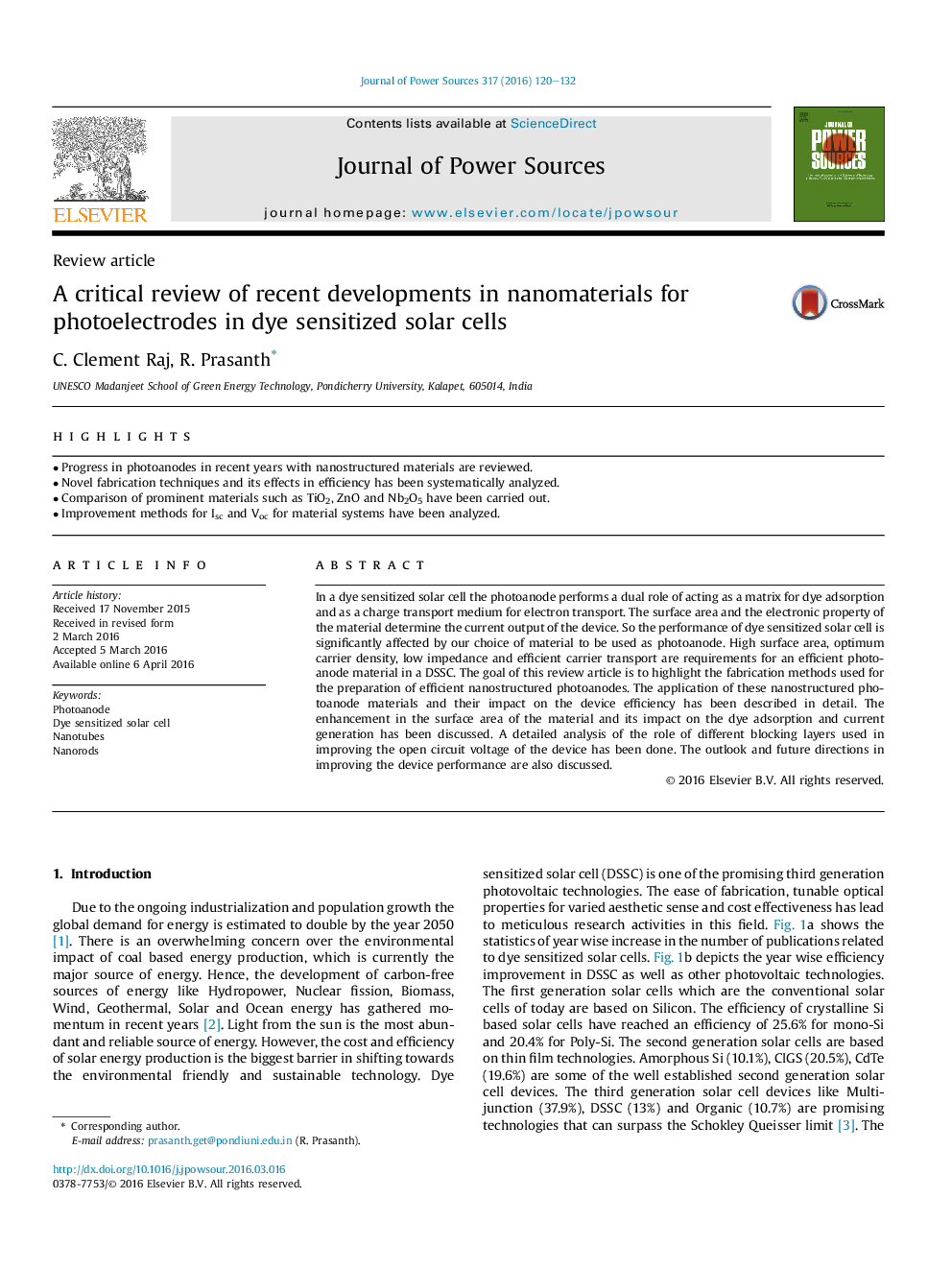| Article ID | Journal | Published Year | Pages | File Type |
|---|---|---|---|---|
| 1286138 | Journal of Power Sources | 2016 | 13 Pages |
•Progress in photoanodes in recent years with nanostructured materials are reviewed.•Novel fabrication techniques and its effects in efficiency has been systematically analyzed.•Comparison of prominent materials such as TiO2, ZnO and Nb2O5 have been carried out.•Improvement methods for Isc and Voc for material systems have been analyzed.
In a dye sensitized solar cell the photoanode performs a dual role of acting as a matrix for dye adsorption and as a charge transport medium for electron transport. The surface area and the electronic property of the material determine the current output of the device. So the performance of dye sensitized solar cell is significantly affected by our choice of material to be used as photoanode. High surface area, optimum carrier density, low impedance and efficient carrier transport are requirements for an efficient photoanode material in a DSSC. The goal of this review article is to highlight the fabrication methods used for the preparation of efficient nanostructured photoanodes. The application of these nanostructured photoanode materials and their impact on the device efficiency has been described in detail. The enhancement in the surface area of the material and its impact on the dye adsorption and current generation has been discussed. A detailed analysis of the role of different blocking layers used in improving the open circuit voltage of the device has been done. The outlook and future directions in improving the device performance are also discussed.
